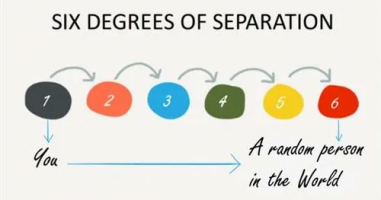____no5
Free Man
Could you please tell your colleague to tell Andrew to tell Mr. Purkis that I thank him from the bottom of my heart for the excerpts from the rehearsal tape? Thanks a lot. (To you, not Mr. Purkis.)
According to the 6 degrees or separation theory there are 4 people or less between you and anyone in the planet. This is based on the hypothesis that each one of the chain knows 100 the other doesn't.
Thus in the second link (first person except you) there are already 100x100= 10,000 and 5th link (4 people except you) 100x100x100x100x100 10,000,000,000 already above planet population. Add to that one more link to compensate any common acquittances between the links and you have a whopping 1,000,000,000,000.
And that's just 4 people between you and anyone else on the planet.






